
Richard III was King of England from 26 June 1483 until his death in 1485. He was the last king of the House of York and the last of the Plantagenet dynasty. His defeat and death at the Battle of Bosworth Field, the last decisive battle of the Wars of the Roses, marked the end of the Middle Ages in England.

Edward IV was King of England from 4 March 1461 to 3 October 1470, then again from 11 April 1471 until his death in 1483. He was a central figure in the Wars of the Roses, a series of civil wars in England fought between the Yorkist and Lancastrian factions between 1455 and 1487.

George Plantagenet, Duke of Clarence, was the 6th son of Richard Plantagenet, 3rd Duke of York, and Cecily Neville, and the brother of English kings Edward IV and Richard III. He played an important role in the dynastic struggle between rival factions of the Plantagenets now known as the Wars of the Roses.

Richard Neville, 16th Earl of Warwick, known as Warwick the Kingmaker, was an English nobleman, administrator, and military commander. The eldest son of Richard Neville, 5th Earl of Salisbury, he became Earl of Warwick through marriage, and was the wealthiest and most powerful English peer of his age, with political connections that went beyond the country's borders. One of the leaders in the Wars of the Roses, originally on the Yorkist side but later switching to the Lancastrian side, he was instrumental in the deposition of two kings, which led to his epithet of "Kingmaker".
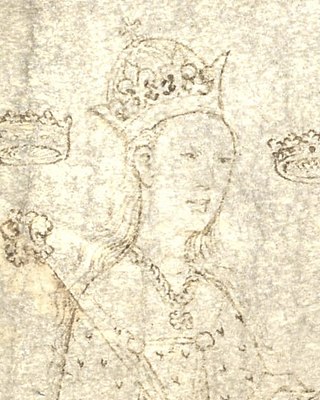
Anne Neville was Queen of England as the wife of King Richard III. She was the younger of the two daughters and co-heiresses of Richard Neville, 16th Earl of Warwick. Before her marriage to Richard, she had been Princess of Wales as the wife of Edward of Westminster, Prince of Wales, the only son and heir apparent of King Henry VI.
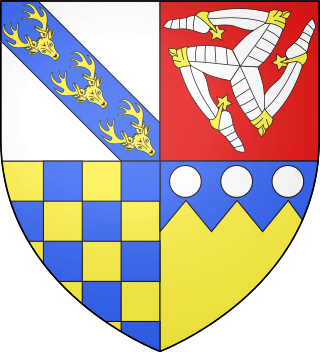
Thomas Stanley, 1st Earl of Derby, KG was an English nobleman. He was the stepfather of King Henry VII of England. He was the eldest son of Thomas Stanley, 1st Baron Stanley and Joan Goushill.
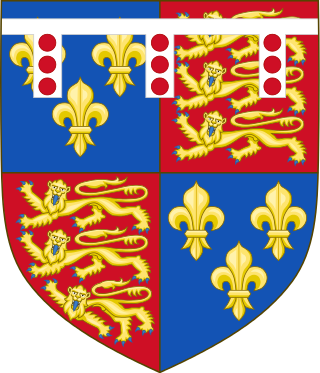
The House of York was a cadet branch of the English royal House of Plantagenet. Three of its members became kings of England in the late 15th century. The House of York descended in the male line from Edmund of Langley, 1st Duke of York, the fourth surviving son of Edward III. In time, it also represented Edward III's senior line, when an heir of York married the heiress-descendant of Lionel, Duke of Clarence, Edward III's second surviving son. It is based on these descents that they claimed the English crown. Compared with its rival, the House of Lancaster, it had a superior claim to the throne of England according to cognatic primogeniture, but an inferior claim according to agnatic primogeniture. The reign of this dynasty ended with the death of Richard III of England at the Battle of Bosworth Field in 1485. It became extinct in the male line with the death of Edward Plantagenet, 17th Earl of Warwick, in 1499.

Edmund Beaufort, styled 4th Duke of Somerset, 6th Earl of Somerset, 3rd Marquess of Dorset, 3rd Earl of Dorset, was an English nobleman, and a military commander during the Wars of the Roses, in which he supported the Lancastrian king Henry VI.
John Neville, 1st Marquess of Montagu was a major magnate of fifteenth-century England. He was a younger son of Richard Neville, 5th Earl of Salisbury, and the younger brother of Richard Neville, Earl of Warwick, the "Kingmaker".
John de Vere, 13th Earl of Oxford, the second son of John de Vere, 12th Earl of Oxford, and Elizabeth Howard, a first cousin of John Howard, 1st Duke of Norfolk, was one of the principal Lancastrian commanders during the English Wars of the Roses.
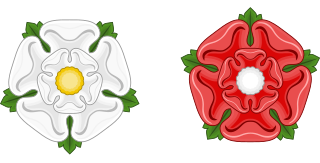
The Battle of Losecoat Field was fought on 12 March 1470, during the Wars of the Roses. Spellings of "Losecoat" vary, with "Losecote" and "Loose-coat" also seen.
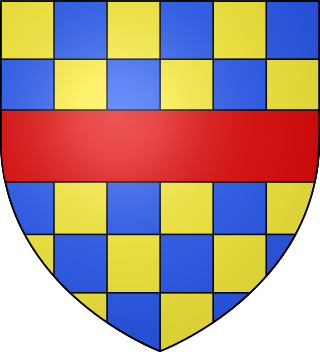
John Clifford, 9th Baron Clifford, 9th Lord of Skipton was a Lancastrian military leader during the Wars of the Roses in England. The Clifford family was one of the most prominent families among the northern English nobility of the fifteenth century, and by the marriages of his sisters, John Clifford had links to some very important families of the time, including the earls of Devon. He was orphaned at twenty years of age when his father was slain by partisans of the House of York at the first battle of the Wars of the Roses, the Battle of St Albans in 1455. It was probably as a result of his father's death there that Clifford became one of the strongest supporters of Margaret of Anjou, wife of King Henry VI, who ended up as effective leader of the Lancastrian faction.

Sir John Courtenay was the third son of Thomas Courtenay, 13th Earl of Devon, and Margaret Beaufort, and was styled Earl of Devon by Lancastrians in exile, following the execution of his brother the 14th earl in 1461.
Events from the 1470s in England.
The Historie of the Arrivall of Edward IV. in England and the Finall Recouerye of His Kingdomes from Henry VI. A.D. M.CCCC.LXXI is a chronicle from the period of the Wars of the Roses. As the title implies, the main focus of the work is Edward IV's arrival in England in 1471 to reclaim his crown. On 2 October 1470, King Edward had fled to Flanders in the face of a rebellion by Richard Neville, Earl of Warwick. Warwick set up – as a puppet king – Henry VI, whom he had himself previously helped depose. On the continent Edward received support from Charles the Bold, Duke of Burgundy, and on 14 March 1471 he landed at Ravenspurn in Yorkshire, and started making his way south. On 14 April Edward defeated Warwick at the Battle of Barnet. Warwick was killed and Edward's reign was secured.
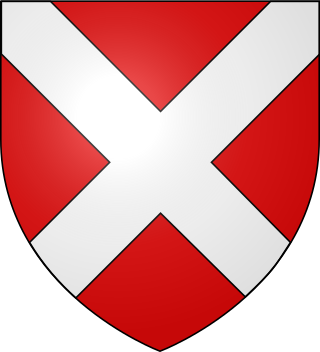
The Neville or Nevill family is a noble house of early medieval origin, which was a leading force in English politics in the later Middle Ages. The family became one of the two major powers in northern England and played a central role in the Wars of the Roses along with their rival, the House of Percy.

The Readeption was the restoration of Henry VI of England to the throne of England in 1470. Edward, Duke of York, had taken the throne as Edward IV in 1461. Henry had fled with some Lancastrian supporters and spent much of the next few years in hiding in the north of England or in Scotland, where there was still some Lancastrian support. Henry was captured in 1465 and was held as a prisoner in the Tower of London. Following dissent with his former key supporter, Richard Neville, 16th Earl of Warwick, Edward was forced to flee in 1470. Henry was then restored to the throne, although he was deposed again the following year.

The Wars of the Roses (1455–1487), known at the time and for more than a century after as the Civil Wars, were a series of civil wars fought over control of the English throne in the mid-to-late fifteenth century. These wars were fought between supporters of two rival cadet branches of the royal House of Plantagenet: Lancaster and York. The wars extinguished the male lines of the two branches, leading to the Tudor family inheriting the Lancastrian claim to the throne. Following the war, the Houses of Lancaster and York were united, creating a new royal dynasty and thereby resolving their rival claims. For over thirty years, there were greater and lesser levels of violent conflict between various rival contenders for control of the English monarchy.
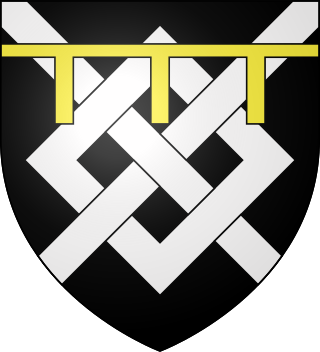
Sir James Harrington of Hornby was an English politician and soldier who was a prominent Yorkist supporter in Northern England during the Wars of the Roses, having been retained by Richard Neville, 5th Earl of Salisbury, who was brother-in-law to the head of the House of York, Richard of York. He was the second son of Sir Thomas Harrington, who had died with the king's father at the Battle of Wakefield in December 1460. James himself had fought with Salisbury at the Battle of Blore Heath in 1459, where he had been captured and imprisoned by the Lancastrians until the next year. He was a significant regional figure during the reign of King Edward IV, although the early years of the new king's reign were marred by a bitter feud between him and the Stanley family over a castle in Lancashire. On the accession of King Richard III in 1483, he was appointed to the new king's Household, and as such was almost certainly with him at the Battle of Bosworth Field two years later. It is likely that he fell in battle there, although precise details of his death are now unknown.
Richard Neville, 5th Earl of Salisbury was a fifteenth-century English northern magnate. He was the eldest son by the second wife of Ralph Neville, 1st Earl of Westmorland, from whom he inherited vast estates in Yorkshire and the North West of England. He was a loyal Lancastrian for most of his life, serving the king, Henry VI, in France, on the border with Scotland, and in many of the periodic crises of the reign. He finally joined York in his last rebellion in the late 1450s and became a Yorkist leader during the early parts of the Wars of the Roses. This led directly to his death following the Battle of Wakefield in December 1460, when he was captured and subsequently put to death in Pontefract Castle.